Abstract
Ovarian fluid samples from erythromycin treated and untreated spawning three year old Chinook salmon were screened independently by two laboratories for the presence of Renibacterium salmoninarum using the indirect fluorescent antibody technique (IFAT). Agreement between the results of the two laboratories could be explained by chance when R. salmoninarum cell numbers as low as one per sample were considered sufficient to represent a positive result. If a positive result was considered to be the detection of larger numbers of R. salmoninarum cells (greater than 51 cells per sample), agreement increased and there was a statistically significant association between the results of the two laboratories. However, the level of agreement did not reach satisfactory levels for a population screening test. Furthermore, approximately 60% of the samples yielded false negative results when IFAT results were compared with positive culture results. These results led to the conclusion that the IFAT screening procedure, as carried out, was unsuitable for the purposes intended. Erythromycin injection of the spawning fish had no statistically significant effect on the results of the IFAT screening test.
Full text
PDF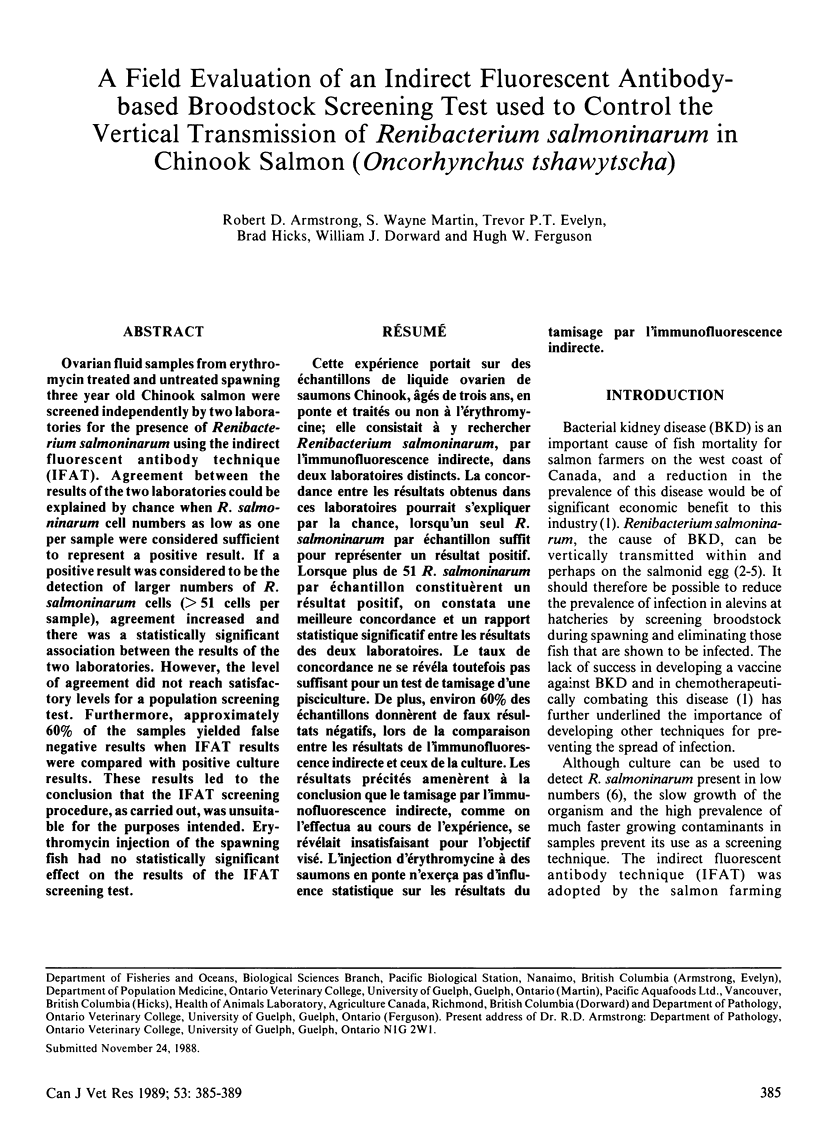
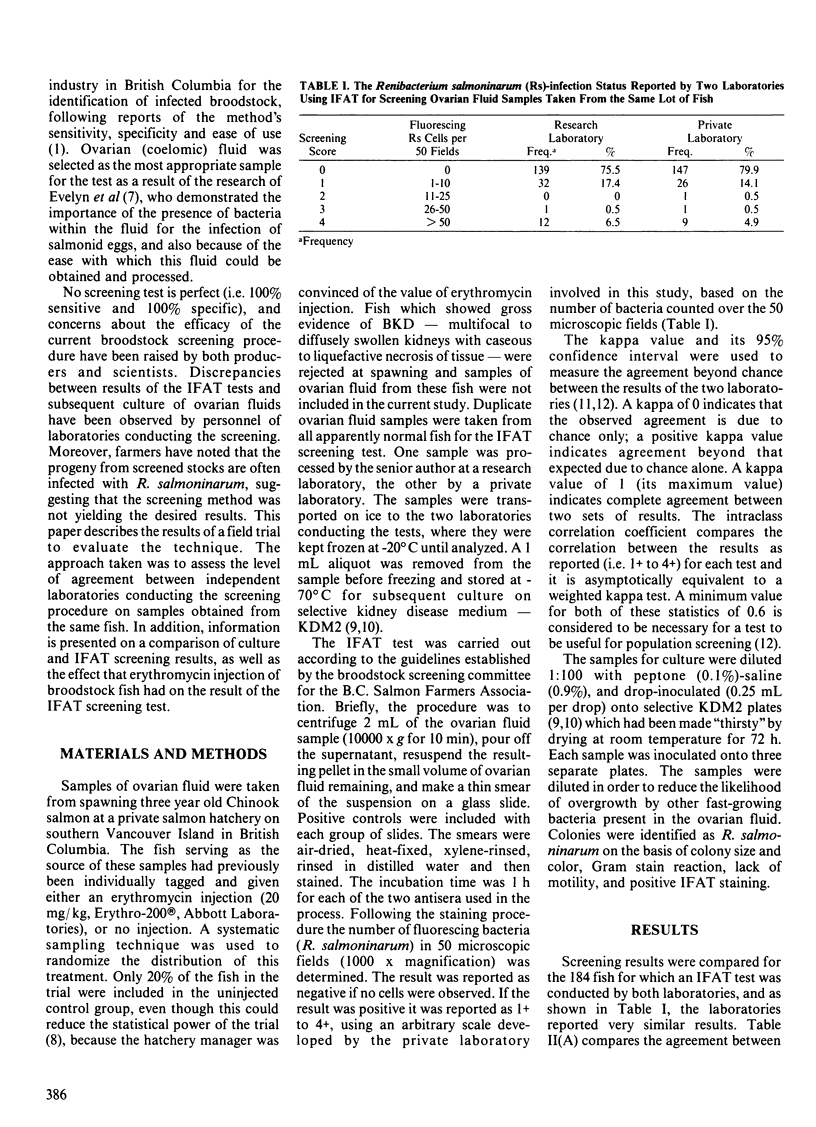
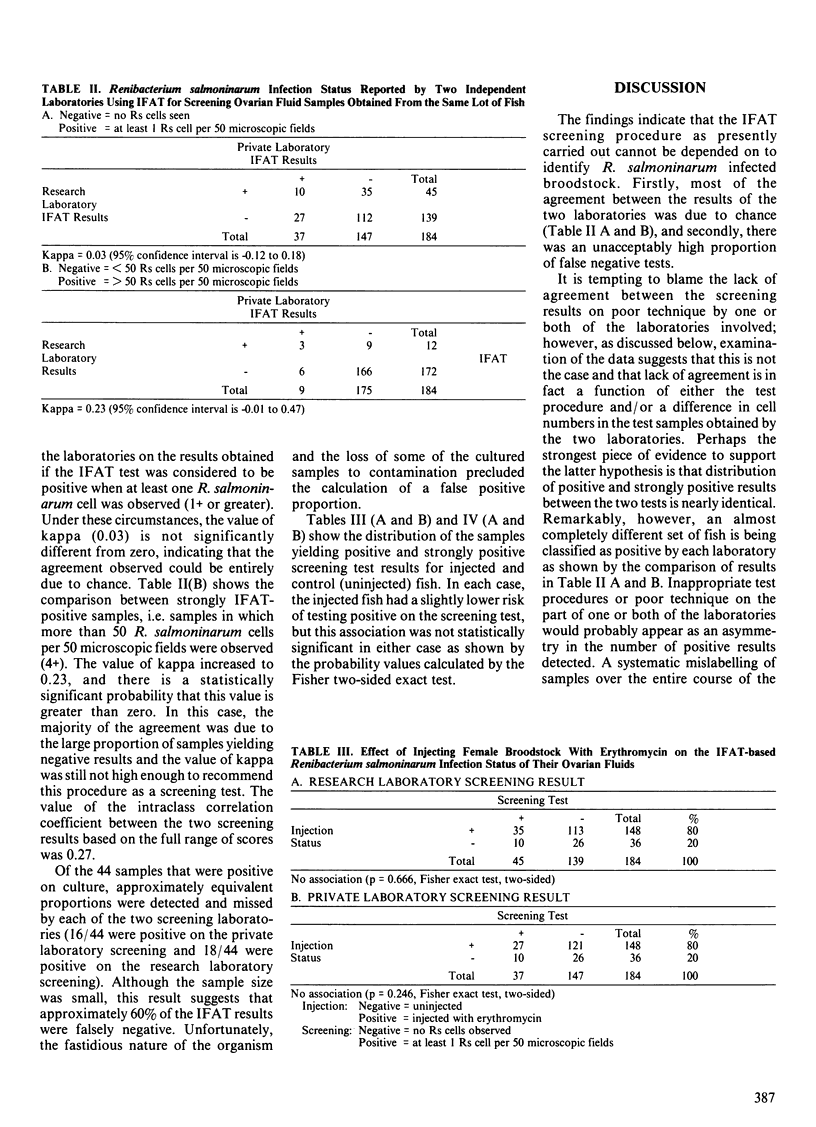
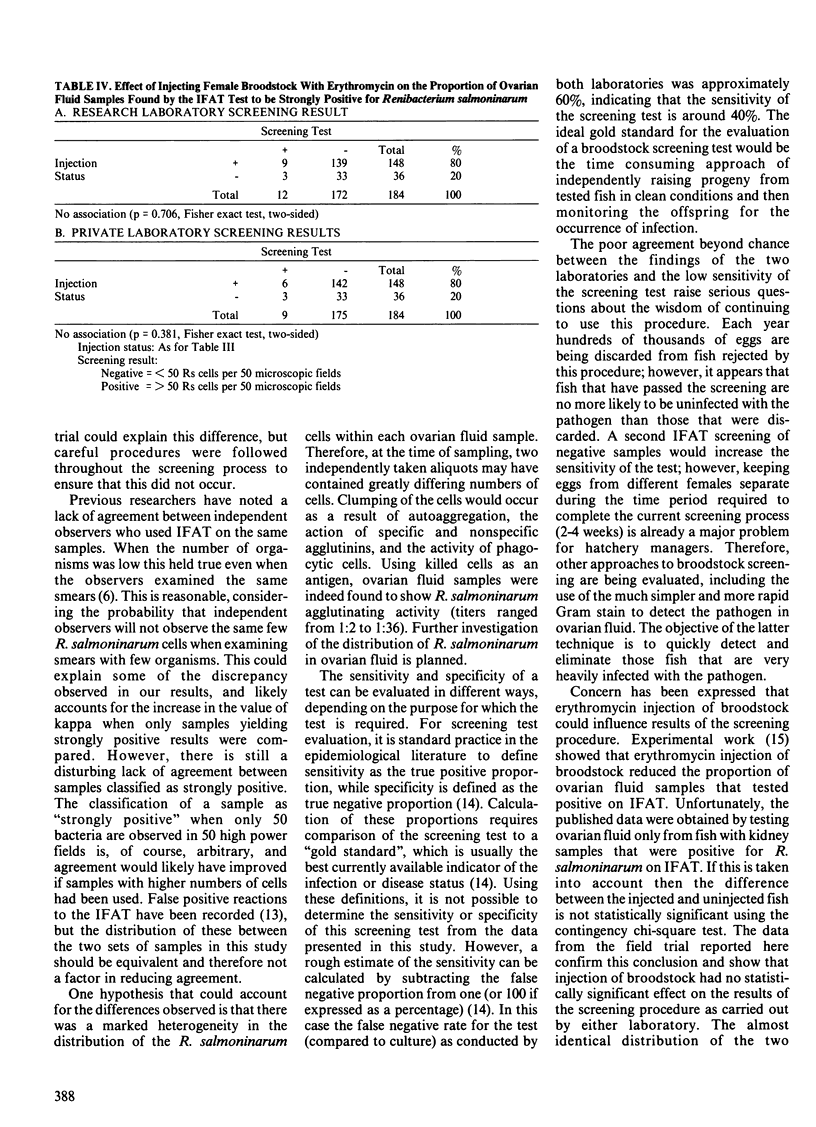
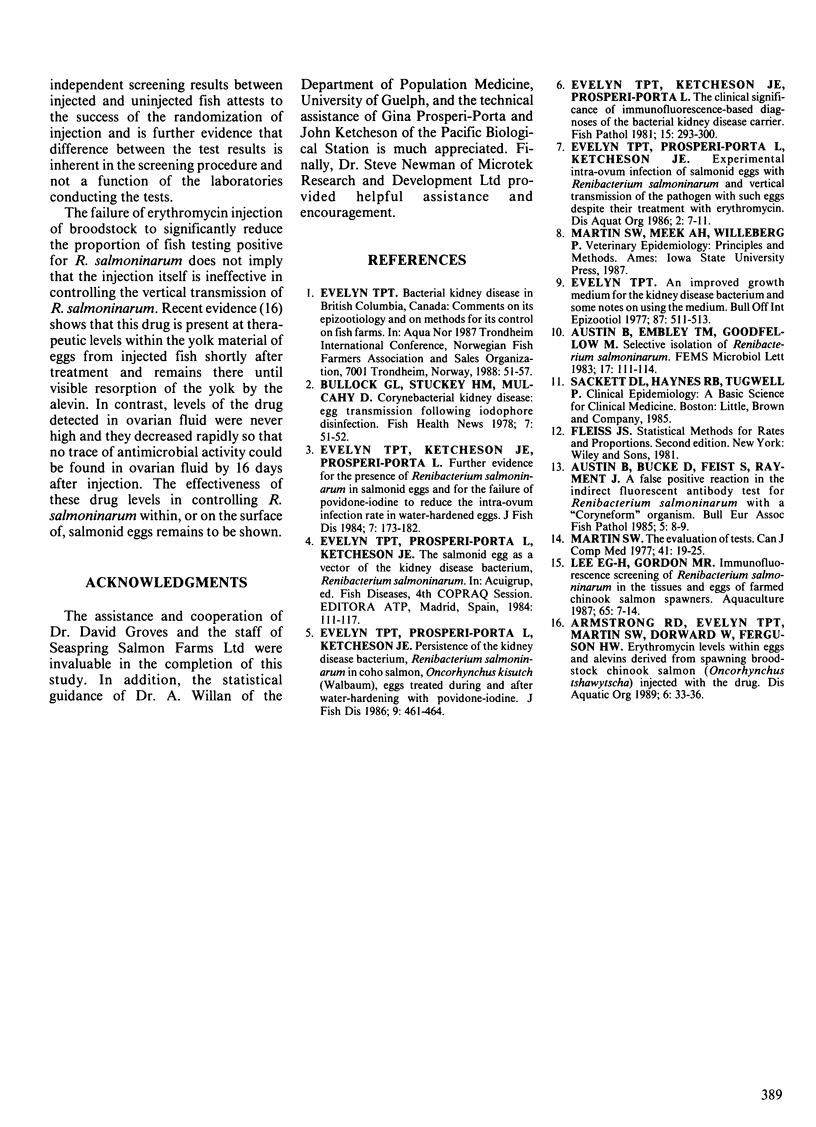
Selected References
These references are in PubMed. This may not be the complete list of references from this article.
- Martin S. W. The evaluation of tests. Can J Comp Med. 1977 Jan;41(1):19–25. [PMC free article] [PubMed] [Google Scholar]


